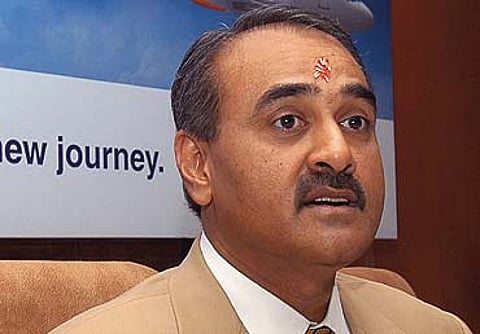Hovering In A Haze
Did the proponents of the AI-Indian merger fail in weighing its pros and cons?

It's not jobs alone that the unions are worried about. They allege the merger would affect the seniority and promotion as both Air India and Indian followed different policies. Notes Lazar: "There has to be parity between people who have joined the two airlines at the same time—considering that differences abound. Air India, for instance, follows a time-bound policy under which 60 per cent employees joining at lower ranks become officers after 19 years." Indian, he points out, has, on the contrary, a performance-linked promotion system with only 30 per cent of its junior employees making it to the officer grade. Incidentally, the NACIL is expected to have a performance-linked incentive for all employees and is also working out a formula to create uniformity in the wage component to reduce the disparity in the gross salary drawn by all employees, a plan not acceptable to some of the unions.
Following the integration on August 27, 2007, with NACIL taking over the assets and liabilities of both airlines, the new entity has a combined fleet size of over 120 aircraft, and ranks among the top 30 airlines globally. With employees across the operation chain—the ground-handling staff, pilots, engineers and cabin crew—seeking legal recourse, many in the company are apprehensive that the entire amalgamation process could be jeopardised. Says a source: "Even some highly placed directors are planning to file petitions against the merger in their individual capacity." Jitendra Bhargava, chief media officer, NACIL, however, states: "Currently, there are no merger-related proceedings that have been affected by the Delhi High Court order."
According to the merger roadmap, the entire NACIL board would be constituted shortly. At present, there are eight functional directors. The new structure would also have six special business units—maintenance, repair and overhaul facility, cargo, low-cost carrier, passenger transportation, ground-handling and allied services including IT and security, each of which will function as independent profit centres. The unions are, however, apprehensive that such a strategy could make the new company vulnerable to backdoor privatisation as it would be relatively easy to hive off small profit units.
There could be other hurdles as well. "The fleet mix means that the engineers and pilots will require cross-training as engineering personnel and pilots of Air India and Indian are specifically trained on a particular type of aircraft," says Captain R.S. Otal of the Indian Commercial Pilot Association which is supporting the AICCA. He points out that pilots trained in Boeing aircraft would need to be specifically trained to fly Airbus aircraft as even a pilot or an engineer trained on an Airbus-310 cannot fly an Airbus-320 without adequate training.
But, "where is the synergy," wonders Vijay Raut, general secretary, Air India Aircraft Engineers Association. "Maintenance protocols are very different and the cross-training costs will be huge. We are concerned about the practicality of fusing two engineering workforces that are extremely divergent in all aspects. The Air India engineers are used to servicing wide-bodied aircraft that have four engines as compared to the Indian engineers who normally work on aircraft with two engines."
Faced with intense competition from private players and low-cost carriers, the government sees the merger as the only way to emerge from the turbulent clouds, especially when the new entity promises economies of scale from operational synergies. The unions clearly don't see it that way. But given Patel's success in pushing ahead with airport privatisation, all is not lost yet for the 'Maharajah' to regain its lost glory.
Tags